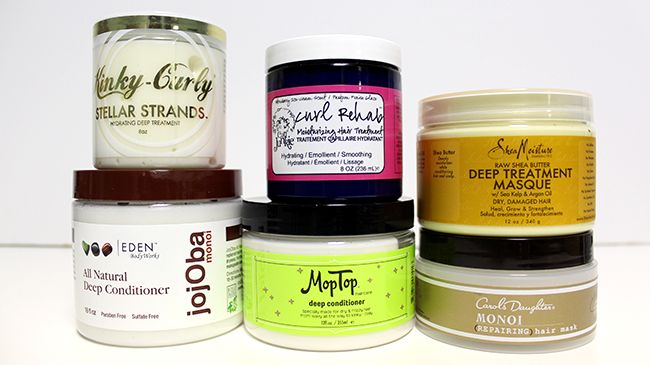After shampooing your hair, it is essential to proceed with a conditioner. Conditioners are formulated to close the hair shaft after the cuticle has been slightly lifted with shampoo for a thorough cleanse. When you do not follow up with a conditioner, your curls are left dry and susceptible to tangles. There are three types of conditioners that are used to moisturize and strengthen your hair for softer and stronger strands.
Daily conditioner
Daily conditioners, also known as rinse-out conditioners, help to nourish the cuticle layer of the hair shaft. They tend to be lighter than deep conditioners and are used more frequently. Before there was an influx in cleansing conditioner or co-washes, daily conditioners were originally used to co-wash. Daily conditioners tend to be packed with emollients that lubricate the strands for easier detangling.
Read more: Top 20 Daily Conditioners
Deep conditioner
Deep conditioners, masques, and deep treatments are the same thing. Similar to daily conditioners, they condition the cuticle layer in addition to having ingredients that penetrate to the hair’s cortex. Some deep treatments contain proteins to strengthen the cuticle but they are usually not formulated at high amounts. Be sure to check the ingredients list for hydrolyzed proteins. Some curlies forgo daily conditioners and solely use deep conditioners so that is always an option. Most hairstylists will encourage you to reserve deep conditioners for 1-2 times a month and rotate daily conditioners in-between, but many curlies rave of great results from using masques on a weekly basis.
Read more: Daily Conditioner vs. Deep Conditioner
Protein treatment
Protein treatments are intended for strengthening your hair. They contain high levels of hydrolyzed proteins and ceramides to fill in gaps along the hair’s cuticle. Even if your hair does not have chemical damage or thermal damage, everyone has some level of mechanical damage. The constant washing, combing, and styling your hair, although helpful, chips away at your cuticle over time. Color-treated hair usually requires more protein reinforcements than virgin hair, but nonetheless, everyone can benefit from some form of protein. Those with low porosity strands have tight cuticle layers usually sensitive to proteins. If your hair becomes stiff and brittle after applying a protein treatment or protein rich products, then you may want to stick with moisturizers. Most curlies will deep conditioner after using a protein treatment to help soften the hair.
Read more: 8 Silicone-free Protein Treatments
Deep conditioner vs protein treatment
Deep conditioners usually address hair dryness, but if your hair is dry immediately after deep conditioning, then that may be indicative of an excessively chipped cuticle, meaning you need a protein treatment. If your hair is mushy and slimy after using bleach or permanent color or if it hyperextends when you comb it, then your hair elasticity is being worn, so you’ll need a protein treatment. Think of it this way: deep conditioners impart moisture and protein treatments ensure that the moisture is retained for as long as possible. When your hair lacks protein it will struggle to maintain moisture because the cuticle releases moisture at the same rate it absorbs it. Remember to follow the manufacturer’s instructions and follow up with a moisturizer.
How do you use conditioners in your regimen?

